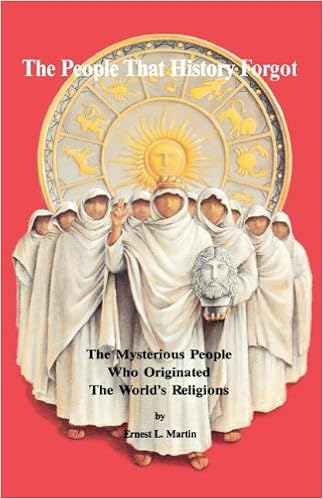His points are interesting insofar as what I've read about the Samaritans from scholars who actually study the faith is that most of the ideas about them, picked up from the Bible and Jewish and Christian writings, are wrong. The very few that exist tend to be very faithful to their religion, which is in most ways much like Judaism. But Martin says otherwise. Those few Samaritans we know today are simply a remnant that remained faithful to their one-time beliefs. Most were quite as the Jewish records recount: namely, they were like Jewish people when it was convenient and like others when it was more convenient to be something else (not unlike many other Gentiles in the early centuries). As such, they mixed other religions with the Jewish faith. These are the synagogues with a mix of symbols.
But Martin doesn't stop there. He also shows how the people of the Near East, from around the area of Babylon, in fact migrated and spread around the areas near Israel in a sort of diaspora not unlike the Jews. These were the people who largely made up the Samaritans--and in turn, those Samaritans, numbering in the millions, spread across the Roman Empire. Most interestingly, Martin even claims that their numbers were so great, and their use as slaves so widespread, that they eventually came to outnumber the Romans in Italy such that the empire really became a Babylonian one.
Martin quotes from a number of primary documents, examines quite a bit of archaelogical evidence, and spends time with some secondary sources (most notably when it comes to the spread of people from the Near East throughout Rome) such that his argument seems fairly convincing, even if it hasn't gotten wide play, but I do wish the book had notes so that the argument could be even more fully traced.
The book is available online here both in audio format and to read (I mostly listened to this book, and the audio was good enough to keep me riveted), in addition to being available for purchase.







No comments:
Post a Comment